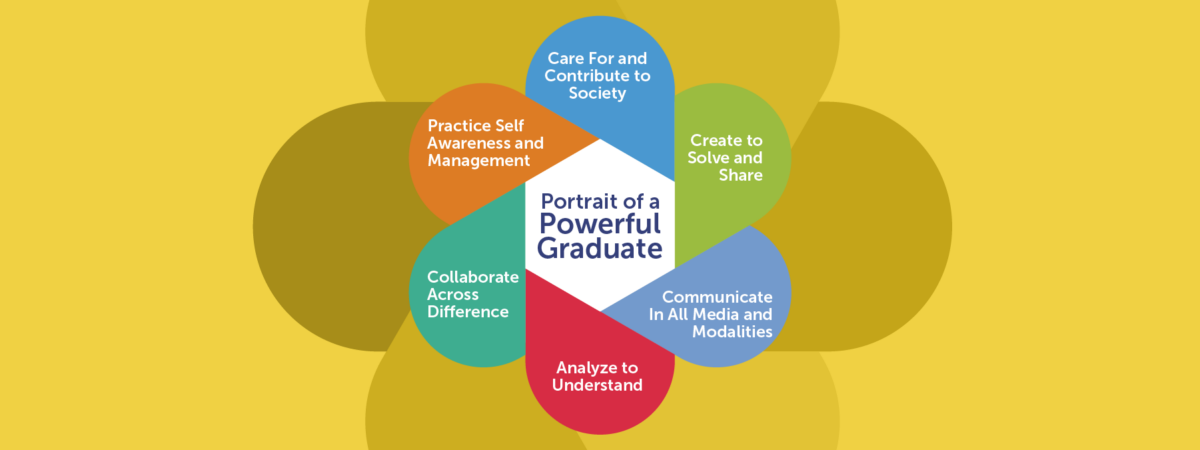
There is no shortage of perspectives on this — from industry, world governments, NGOs, and others, but we also need to hear from educators, learners, families, and communities to understand their own vision for their lives and learning. Over the last decade, thousands of school districts have worked with their communities to create a unique Portrait of a Graduate (PoG) that will answer these questions and identify vital skills and mindsets that they believe their students will need upon graduation to succeed.
Widely adopted by school districts, the Portrait of a Graduate (PoG) defines and shares the dispositions and abilities that a community believes their students should embody and exemplify by graduation. In order to uncover the attributes that were most important to districts nation-wide, our team analyzed 69 Portraits of a Graduate from districts across the United States (including 31 from districts in the League of Innovative Schools). Most portraits contained six to eight attributes that they identified as vital for their school system’s graduates.
We expected to uncover a wide range of qualities that school districts nationwide identified as essential for student success in their unique contexts and communities. However, we were surprised to discover that almost every single school district identified an almost identical set of qualities.
In some cases attributes were articulated using the same language across a majority of Portraits. For instance, “critical thinking” appeared in 39 of the Portraits we examined. On the other hand, there were attributes with wide variability in language. For example, “responsibility,” “persistence,” and “adaptability” each appeared a few times throughout our sample. While these terms certainly mean different things, we see their intent in terms of the higher level attribute necessary for life success as similar (in this case, practicing self-awareness and management) and therefore classified them within the same domain grouping.
These sometimes subtle differences in how attributes were expressed highlight the priorities and viewpoints of each district’s own community. After all, an important part of designing a PoG is to anchor the process in community-centered framing. However, this variability in language can make it more difficult for policymakers or organizations like ours who seek to support many school districts in achieving these goals for their students.
Overall, we identified the following six categories to capture 90 percent of attributes articulated by school districts across the country:
Holistically, these attributes represent three connected domains for learners to practice. At the center are skills for students to think deeply and create. These include both analytical skill sets to understand (critical thinking) and generative skill sets to make and solve (creativity and problem-solving).
These skill sets are enacted through abilities to engage effectively and sensitively. Students must be able to communicate effectively demonstrating competence in both traditional literacies (reading, writing, speaking) as well as digital and media literacy. They must also be able to understand and work with people, practicing empathy, collaboration, and cultural sensitivity.
Finally, students must be able to act responsibly in context when applying these practices. They must engage in agency and self-efficacy, practicing self-awareness, responsible decision-making, flexibility, and persistence. Additionally, they must consider their role as part of their community and society, considering attributes such as global competence, citizenship, stewardship, and service.
Informed by our research, networks, and programs, Digital Promise is developing resources for school districts to be better able to articulate and integrate these domains in practice, in ways that are cumulative from grade to grade, consistent across classrooms, and competency-based. Over the next several months, we will share more of what we have learned about the Graduate Portrait, our emerging research and development into best practices to make these portraits more actionable, and opportunities to partner with us so we can continue to learn from each other.
To receive timely updates on this work please subscribe to our Action Report newsletter.